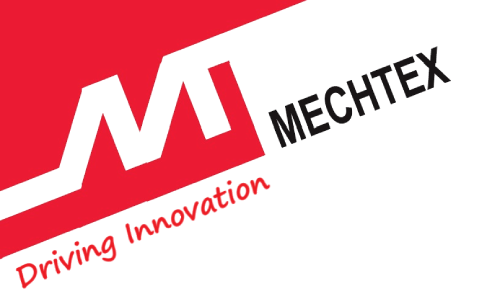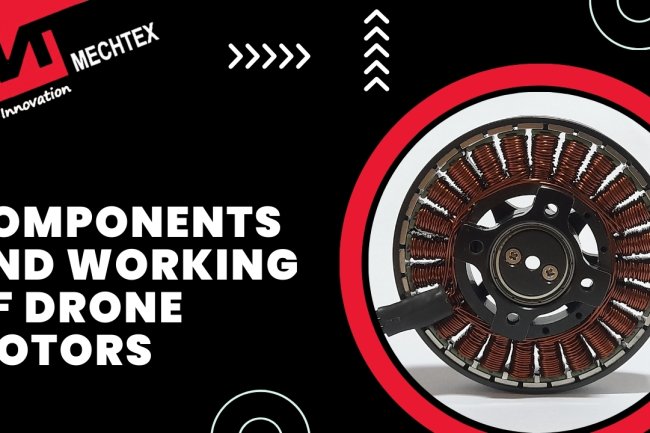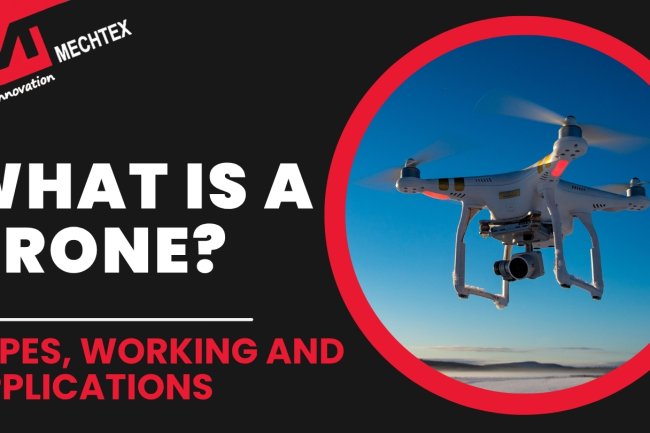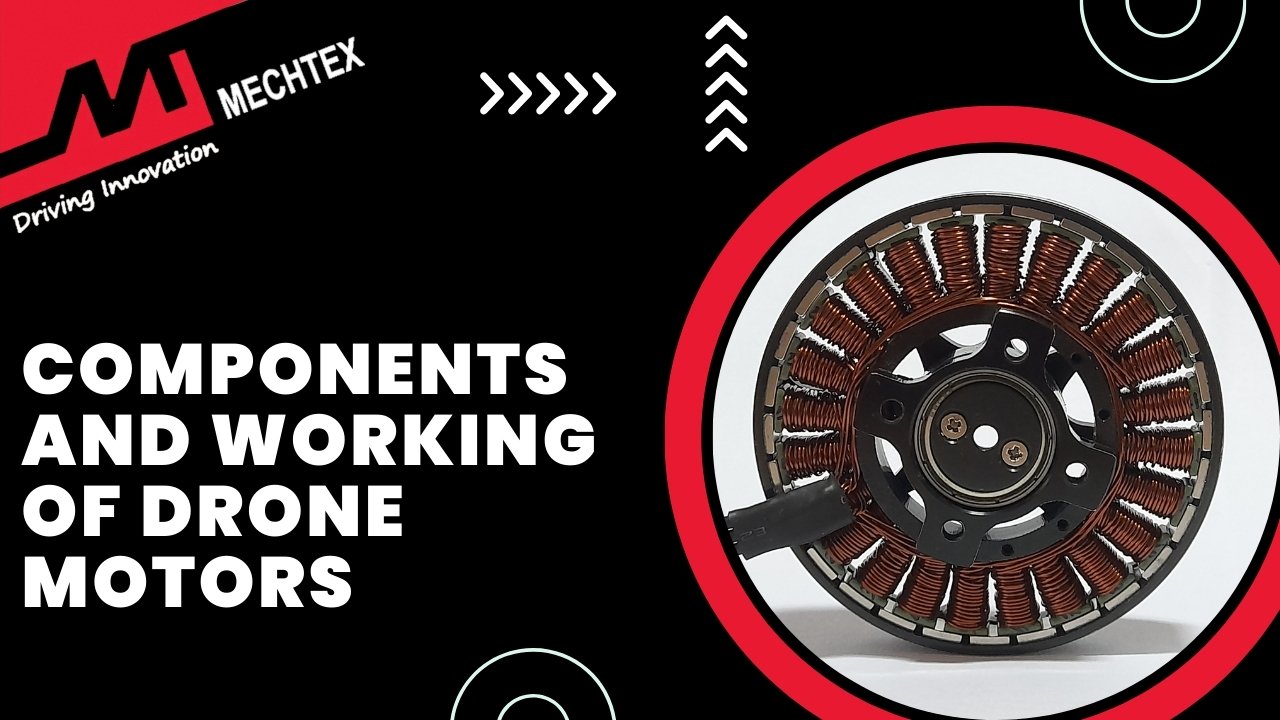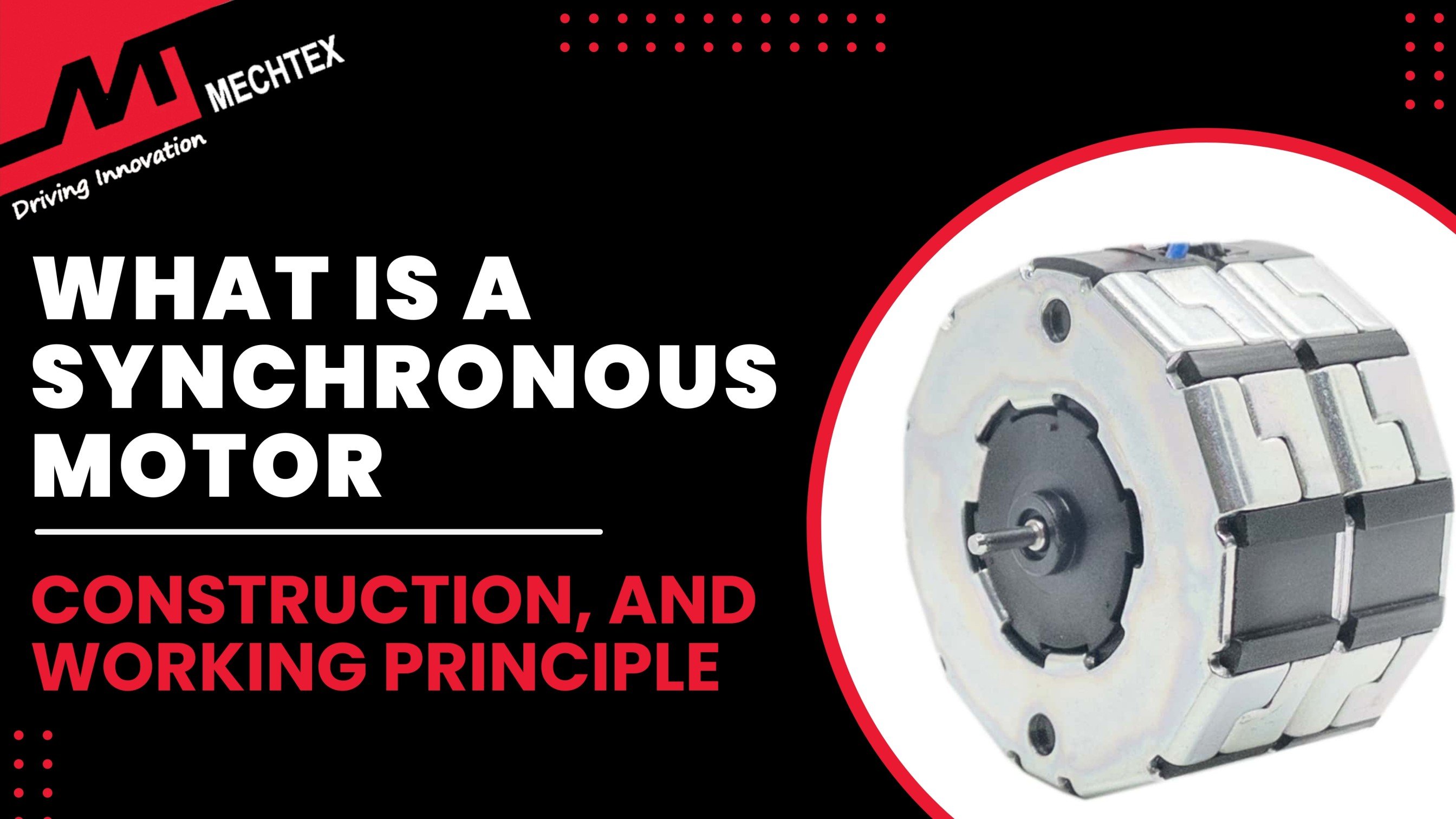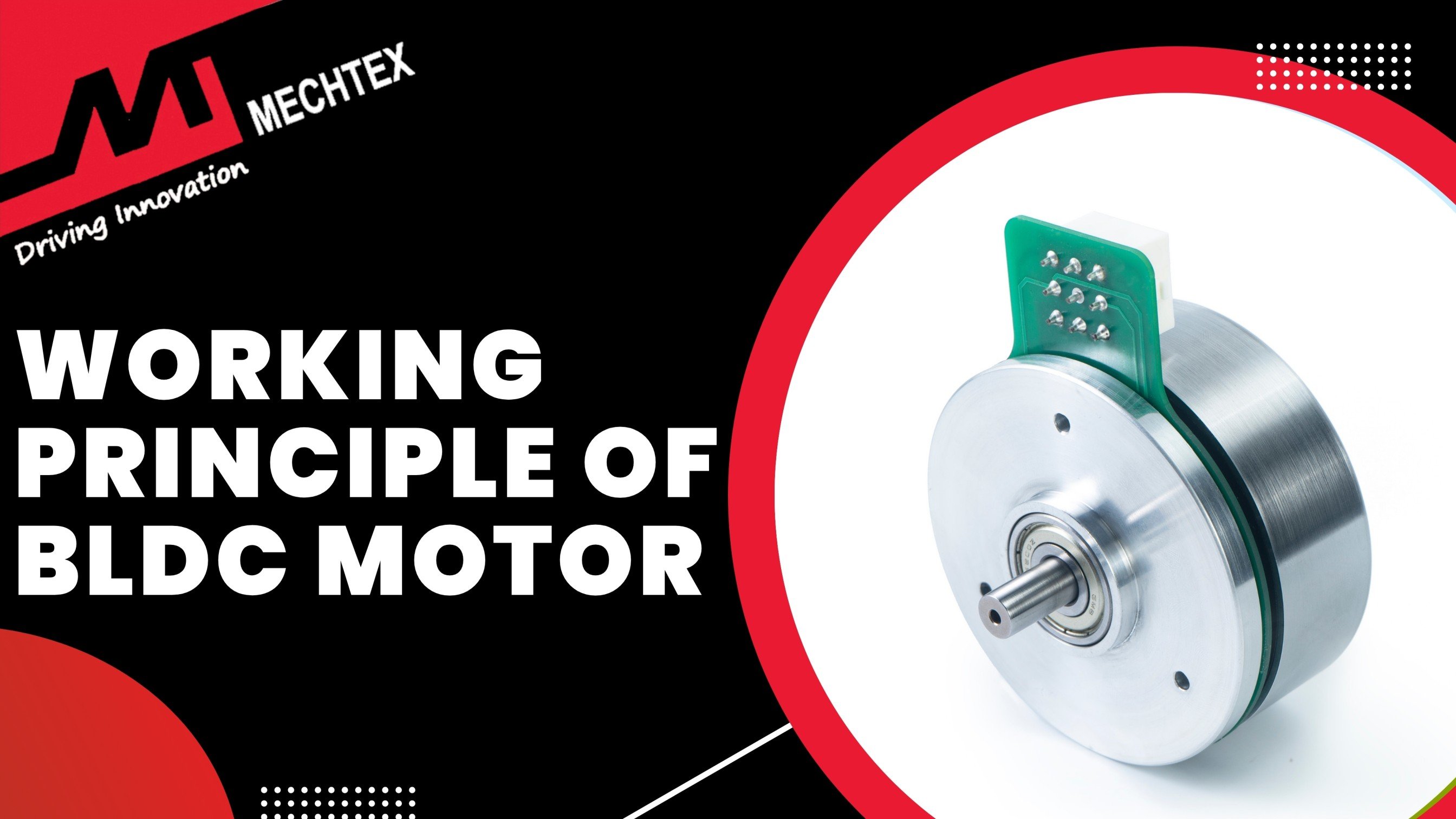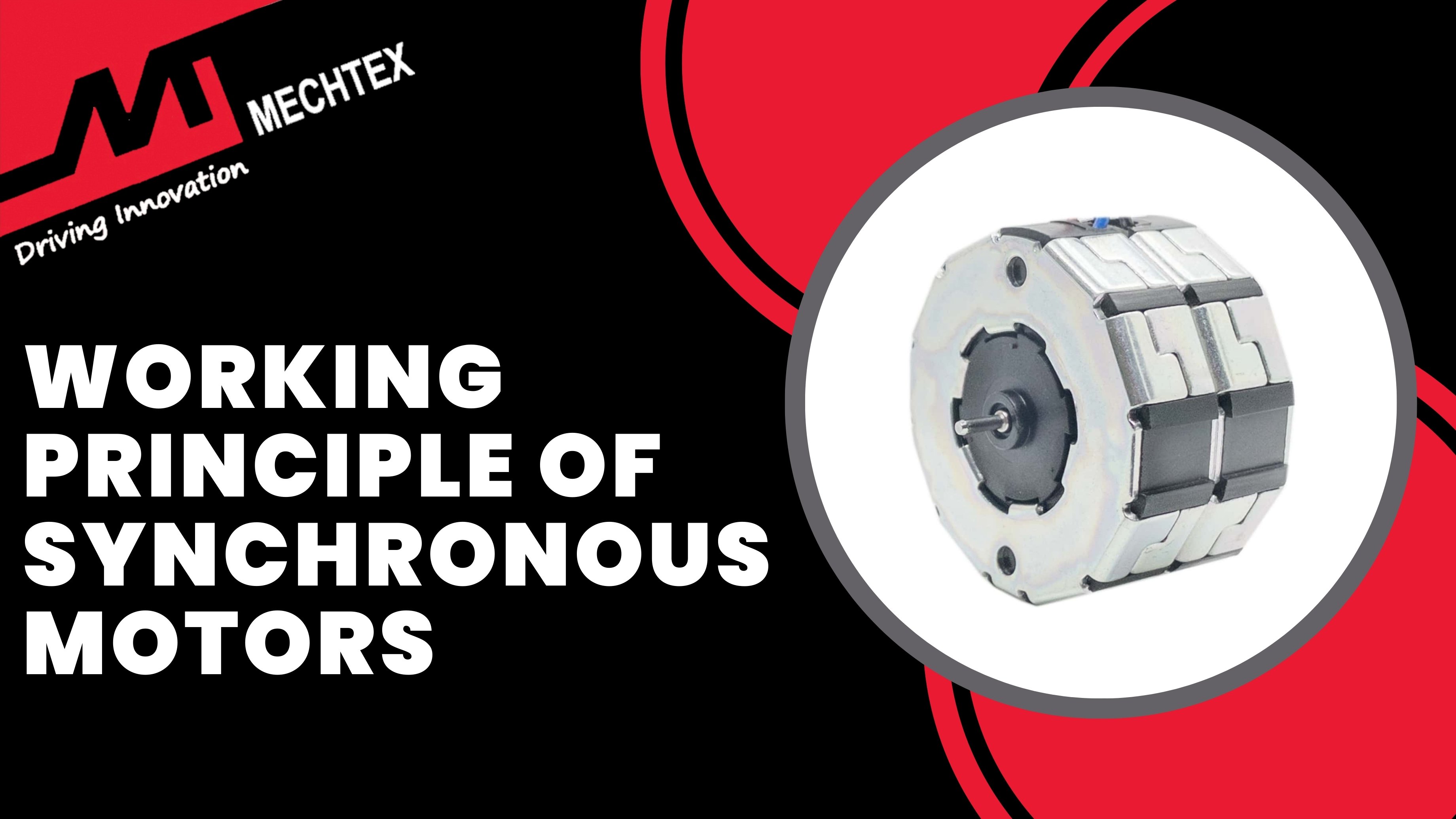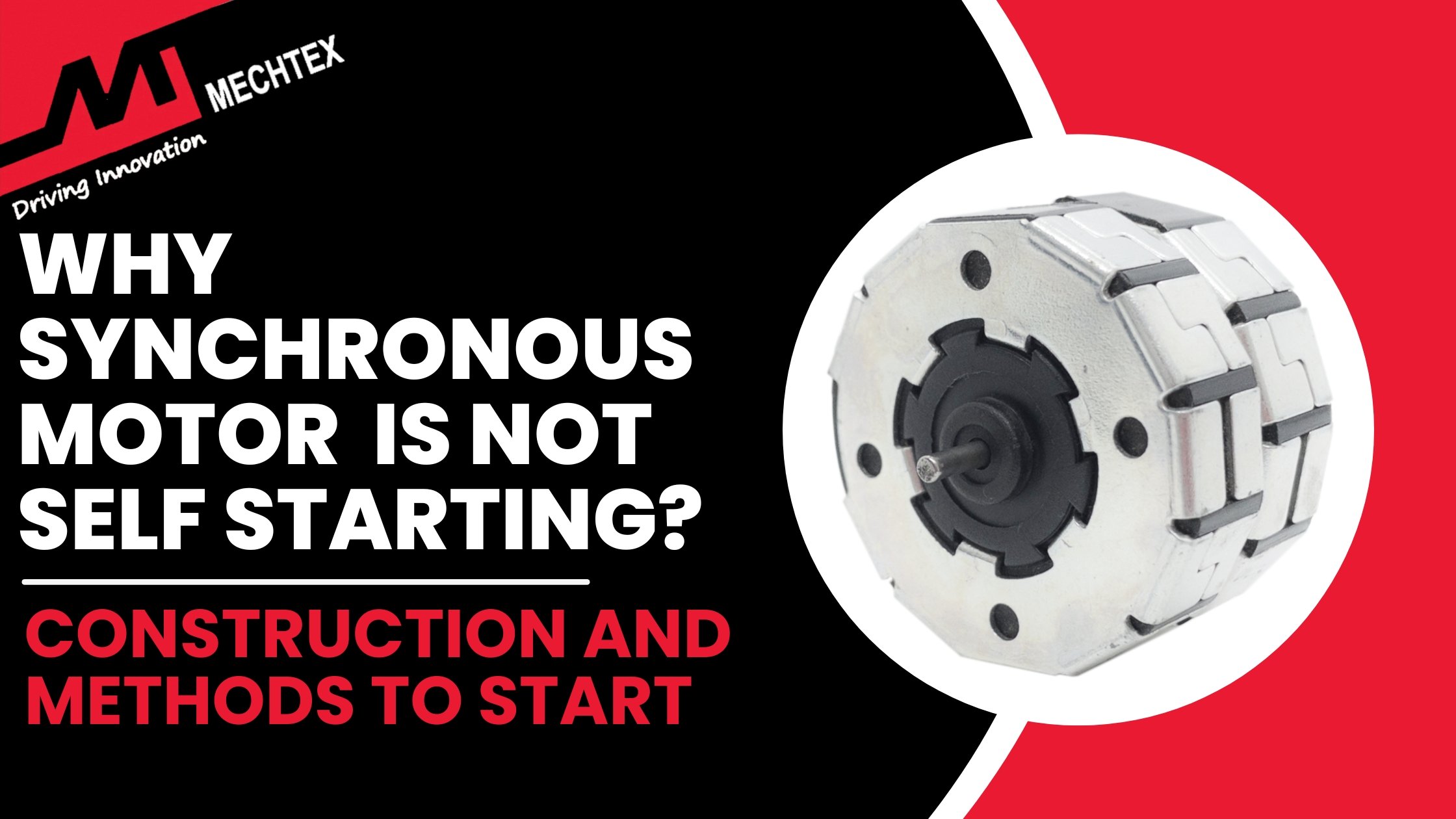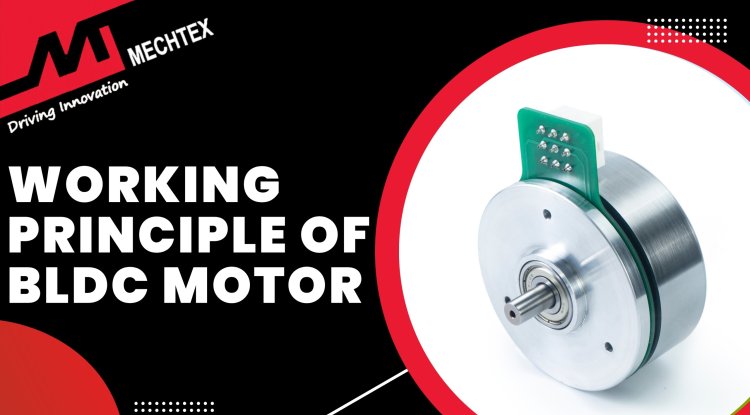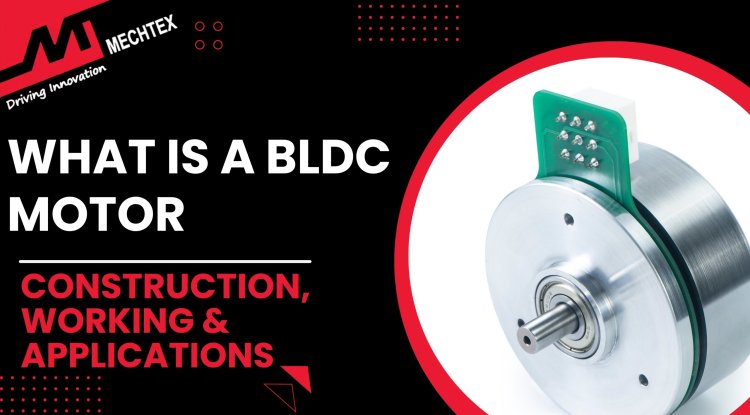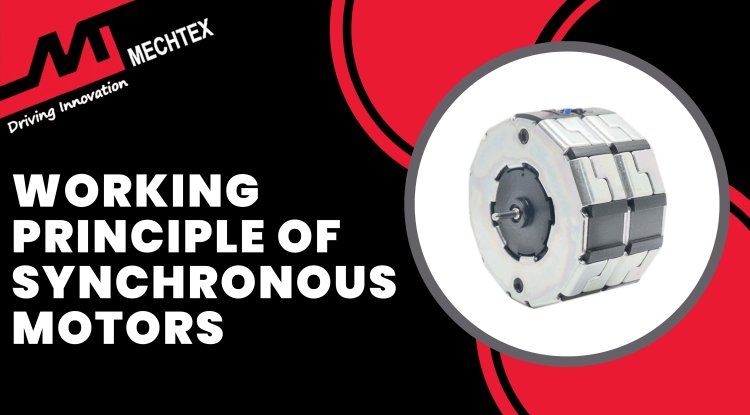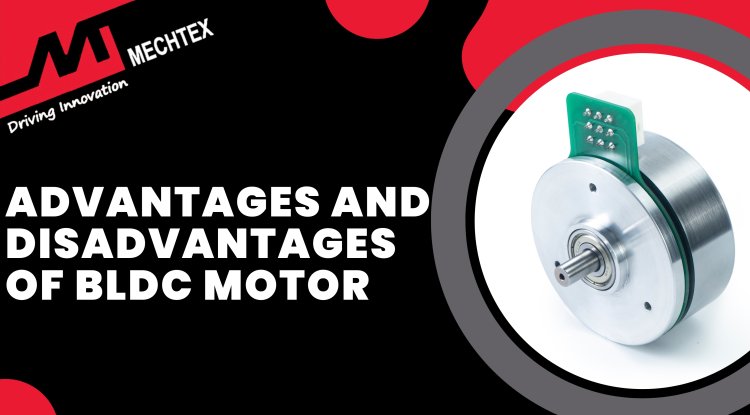A Comprehensive Guide on Drone Motors| What they are, their types, and their applications
Drone motors are the driving force behind the exceptional performance of drones. These small and powerful motors are responsible for allowing drones to fly in the sky.
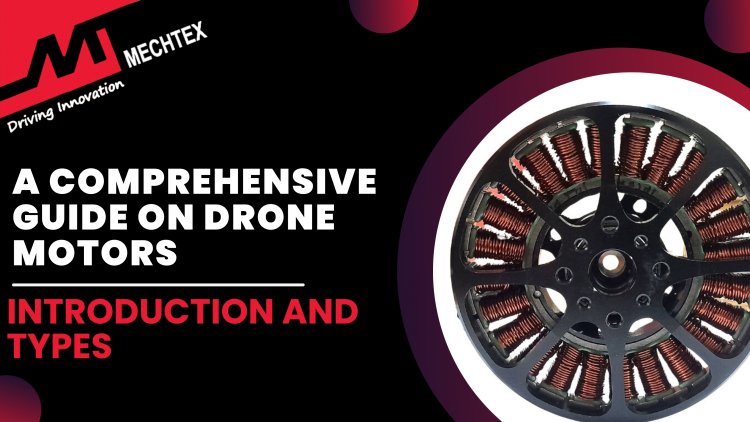
“The power of drone motors turns the imagination into reality as they lift the drone into the sky to achieve endless possibilities”
Have you ever wondered how drones fly smoothly and perform aerial moves with ease? It is all thanks to drone motors. Drone motors are the driving force behind the exceptional performance of drones. These small and powerful motors are responsible for allowing drones to fly in the sky, hover at different places, and perform intricate moves. In this blog, we will learn about drone motors - What they are, their types, their components, and factors to keep in mind while selecting a drone motor.
What is a Drone Motor
A drone motor is a specialised electric motor that generates the thrust required to lift the drone. It converts electrical energy into mechanical energy and spins the propellers at high speed to create airflow to lift the drone. A drone, also known as an unmanned aerial vehicle (UAV) is an aircraft that operates without a human pilot and performs tasks such as aerial photography, land surveying, surveillance, and delivering parcels. Every drone (UAV) requires a reliable and efficient motor to perform these tasks easily.
A drone motor does not work in isolation. It works with other components and forms an integrated propulsion system. The key components are:
- Motor (Brushed Motor or Brushless Motor) - Generates rotational force to spin propellers and lift the drone.
- Propellers - Attach to the shaft of the motor and generate thrust to lift the drone.
- Electronic Speed Controller (ESC) - Controls the speed and direction of the drone motor through electrical signals.
- Li-Po Battery – Provide Power to Motor and Battery.
- Flight Controller – Send commands to the ESC based on inputs from sensors and other algorithms for stable flight.
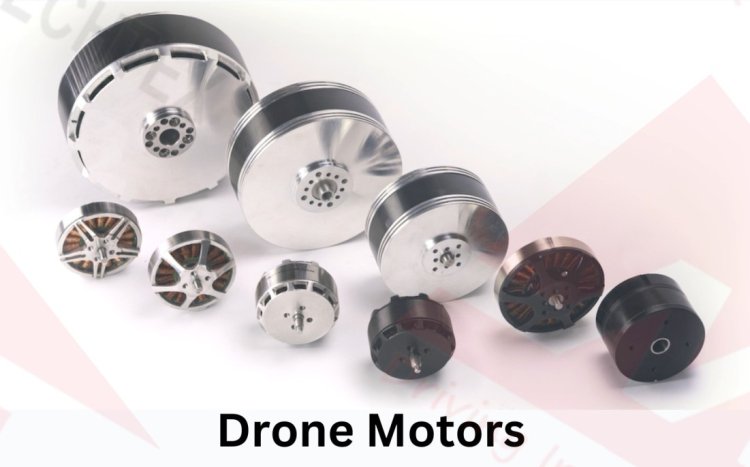
The drone motor is a DC motor which operates on direct current supplied by the batteries. It works by receiving the signal from the ESC (Electronic Speed Controller). These signals convert direct current into a three-phase signal, which creates a rotating magnetic field in the stator. The permanent magnet in the rotor interacts with this magnetic field and starts rotation. Motor speed can vary with the help of PWM signals from the ESC to enable precise control and smooth flight.
Also Read
Why BLDC Motors Are Used In Drone
Types of Drone Motors
Drone motors are the heart of a UAV's propulsion system. They provide power, thrust, and propulsion to drones for smooth and stable flight. Based on their construction, functionality and applications, drone motors can be broadly classified as follows:

-
Brushed DC Motors
Brushed DC motors are the simplest type of electric motor used in toy and recreational drones. This motor consists of stator, rotor, commutator and brushes.
These motors use carbon brushes and commutators to switch the current within the motor's winding. It energises the rotor winding and creates a magnetic field that causes rotation. Although easy to control, the brushed DC motors have low efficiency, limited life span, and generate more friction during operation.
-
Brushless DC Motors (BLDC motor)
Brushless motors are the most commonly used motors in modern drones. This motor consists of stator, rotor and ESC (Electronic Speed Controller). It eliminates the use of brushes and commutators.
The ESC switch the direction of current and energises the stator coil in a specific sequence. It creates a rotating magnetic field in the stator winding. The rotor interacts with the stator winding and causes the rotor to spin.
The brushless DC motors (BLDC Motor) provide high efficiency, high power-to-weight ratio, and low maintenance requirements, which makes them ideal for modern drones.
BLDC motors are further categorised into two types:
-
-
-
- Outrunner Motors - In an outrunner motor, the rotor spins around the stator and generates high torque at low RPM. This design is ideal for drones lifting heavy payloads such as photography and videography drones, delivery drones and agriculture drones.
-
- Inrunner Motor - In this type of BLDC motor, the rotor spins inside the stator winding and generates high RPM at low torque. This makes them ideal for fixed-wing drones where speed is a priority over torque.
-
-
- Coreless Motors
Coreless motors are a specialised form of brushed DC motor without an iron core in the rotor. They are extremely lightweight motors and offer fast acceleration. It makes them suitable for small or micro drones, which are used for recreational purposes.
Other types
-
Gimbal Motors
Gimbal motors are specialised drone motors used for stabilising the cameras used in drones. These motors offer precise control over camera movement and high torque for effective stabilization. They have a compact design and offer silent operation which ensures high-quality footage.
-
Tilt-rotor Motor
Tilt-rotor motors are specialised motors that can be rotated to transition between horizontal and vertical flight modes. The motor is mounted on the aircraft wing and is capable of tilting upward and downward. The tilt-rotor motor allows the aircraft to take off and land vertically like a helicopter.
Also Read
What are Drones | Types, Working, and Applications
Key Specifications of Drone Motor
Selecting the right drone motor requires evaluating several essential specifications that affect flight stability, thrust, efficiency, and overall performance. Below are the most critical parameters to consider:
- KV Rating (RPM per Volt)
The KV rating indicates how many revolutions per minute a brushless DC motor (BLDC motor) will turn per volt of electricity without any load.
-
-
-
- High KV rating motors: High KV motors (eg, 1000 KV to 2500 KV) spin faster and are ideal for racing drones where speed is the priority.
- Low KV rating motors: Low KV rating motors (eg, 400 to 800 KV) spin slower but provide more torque, which makes them ideal for heavy lift drones that carry heavy payloads.
-
-
- Thrust (g or kg)
Thrust is the amount of upward force the drone motor can generate with a given propeller. The thrust of the motor must exceed the drone's weight for stable flight. Typically, a 2:1 thrust-to-weight ratio is recommended for smooth manoeuvring and payload support.
- Propeller Size
It refers to the dimension of the propeller, typically measured in inches. The propeller size must match the motor KV, frame size, and battery voltage to optimise drone performance, flight time, and efficiency.
-
-
-
- Large Propellers: It generates more lift but requires low KV motors.
- Small Propellers: Spin faster with a high KV motor and are used for drones where speed is required.
-
-
- Voltage(V)
Voltage refers to the electrical potential (current) supplied to the drone motor from the battery. It determines how fast and how efficiently a motor can operate. Each drone motor has a recommended voltage (7.4 V to 22.2 V) and must match with drone's battery type.
- Power (W)
The power of a drone motor refers to the amount of electrical energy converted into mechanical output and is measured in watts (W). It is calculated as Power = Voltage × Current.
-
-
-
- High Power Motors: It deliver greater thrust and supports large propellers, which makes them ideal for heavy lift drones.
- Low Power Motors: It consume less energy and are suitable for lightweight drones that require long flight times.
-
-
Applications of Drone Motors
Drone motors play a crucial role in enabling the functionality and versatility of drones across a wide range of applications, such as cinematography, defence, agriculture, and delivery. Drone motors are versatile components that make drones suitable across various fields.
Some common applications of drone motors are:
- Cinematography Drones
Cinematography drones are designed to capture high-quality aerial footage for films, televisions, commercials, and other visual representations. These drones have specialized cameras, stabilizing gimbals, and precise control systems to achieve smooth and cinematic photos and videos from various aerial perspectives. They enable filmmakers and videographers to capture stunning aerial photos and videos with ease and creativity.
Gimbal drone motors are extensively used for aerial photography and videography by photographers and filmmakers. These motors enable drones to capture smooth and stable footage from various angles, including high-altitude shots, sweeping panoramas, and dynamic tracking shots.
BLDC gimbal motors are particularly favoured in these drones for their precision and ability to stabilize the camera effectively, even in challenging aerial conditions, ensuring professional-quality results.
- Surveillance Drones
A surveillance drone is also known as an unmanned aerial vehicle (UAV) and unmanned aircraft system (UAS). These drones are remotely piloted or autonomously operated to gather photos, video, and other types of data of a certain area. These drones are used in various surveillance and monitoring operations such as military reconnaissance, border patrol, law enforcement, and wildlife monitoring.
Brushless motors are widely used in surveillance drones due to their high efficiency, reliability, and precise control. They also offer a high power-to-weight ratio, enabling surveillance drones to carry payloads such as cameras, sensors, and communication equipment for surveillance and monitoring activities.
- Delivery Drones
Delivery drones are unmanned aerial vehicles (UAVs) used to transport goods from one location to another either autonomously or by remote control. These drones have gained attention in the last few years due to their potential to revolutionise last-mile delivery logistics by offering fast and efficient delivery solutions to various industries.
Brushless motors are the most common types of drone motors used in delivery drones. These motors offer have high load-carrying capacity which enables delivery drones to carry heavy payloads easily from one location to another location.
- GIS Survey Drones
GIS survey drones are special types of drones. They are equipped with specialised sensors and cameras used to collect geographical data for mapping, surveying, and analysis purposes. GIS survey drones play a crucial role in various industries, including urban planning, agriculture, environmental monitoring, and disaster management.
Coreless drone motors are widely used in GIS survey drones, due to their lightweight design and smooth operation. They offer agility and manoeuvrability, making them suitable for capturing detailed data in confined spaces or challenging environments.
- Agriculture Drones
Agriculture drones are also known as agricultural UAVs or precision agriculture drones. They are designed to perform various agricultural activities. These drones are equipped with specialized sensors, cameras, and other payloads to collect data and perform various tasks such as crop monitoring, crop spraying, pesticide spraying, soil analysis, and irrigation management.
Heavy lift drone motors are used in agriculture drones. They offer a high power-to-weight ratio, enabling agriculture drones to carry various payloads such as multispectral cameras, LiDAR sensors, and agricultural spraying equipment while maintaining stable flight characteristics to perform various agricultural tasks.
- VTOL Aircrafts
Vertical Takeoff and Landing (VTOL) aircraft are aircraft that can take off, hover, and land vertically without any runway. These aircraft are capable of transitioning between vertical flight mode and horizontal flight mode. VTOL aircraft offer various advantages such as flexibility, accessibility to remote or confined areas, and the ability to operate in diverse environments.
Electric ducted fan motors are the most common type of drone motor used in VTOL aircraft. It consists of an electric motor driving a fan enclosed within a duct. These motors are commonly used in smaller VTOL aircraft, micro drones, and nano drones. These motors provide efficient thrust and compact size making them suitable for various VTOL applications where space is limited.
- Defence Drones
Defence drones also known as military drones are used by defence and military forces for a wide range of activities including reconnaissance, surveillance, intelligence gathering, target acquisition, combat operations, and aerial strike missions. These drones play a crucial role in modern wars by providing enhanced situational awareness and conducting precision strikes with minimal collateral damage.
Turboprop Engines are widely used in defence drones. They have a perfect balance between power, efficiency, and range, making them suitable for surveillance, reconnaissance, and target acquisition missions.
